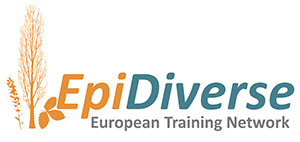Helene studied Biomathematics in Greifswald and started her PhD in Bioinformatics from 2012-2016 at the University of Leipzig with Peter Stadler. Here, she developed methods for DNA methylation sequencing analysis and their application to cancer data.
In late 2017, she joined as a PostDoc Alexander Meissner’s group at the Max Planck Institute for Molecular Genetics in Berlin, where she focuses on using scRNA and WGBS to study how epigenetic factors regulate early mammalian embryonic, as well as analyzing the epigenetic footprint of cancer.
Abstract
Third-generation sequencing techniques are currently revolutionizing the field of genome analysis by generating formerly unreachable read lengths with averages in the tens of thousands of nucleotides. Current established applications are de novo genome assemblies, structural variant and splicing detection. In addition, formerly almost unsequencable regions like telomeres and highly repetitive elements become now accessible. However, the potential of Nanopore sequencing is not yet fully exhausted: it does not require any amplification and thus enables direct readout of sequence including base modifications on a single DNA or RNA molecule level.
To date, methylation of CpGs is the best-established base modification read-out from mammalian DNA. The DNA methylome provides information of cell type identity, DNA accessibility and plays a critical role during embryonic development, particularly in repressing retrotransposons. The mammalian methylation landscape is dependent on the combined activities of the canonical maintenance enzyme Dnmt1 and the de novo Dnmts, 3a and 3b.
Using long-read Nanopore and whole-genome bisulfite sequencing in genetically engineered methylation depleted mouse embryonic stem cells, we demonstrate that Dnmt1 displays de novo methylation activity in vitro and in vivo with specific retrotransposon targeting. Utilizing additional knockout lines and molecular characterization, we show that Dnmt1’s de novo methylation activity depends on Uhrf1 and its genomic recruitment overlaps with targets that enrich for Uhrf1, Trim28, and H3K9 trimethylation, especially at retrotransposons where this mechanism may provide additional stability for long-term repression and epigenetic propagation throughout development.





